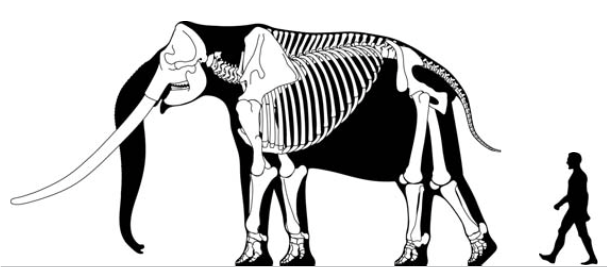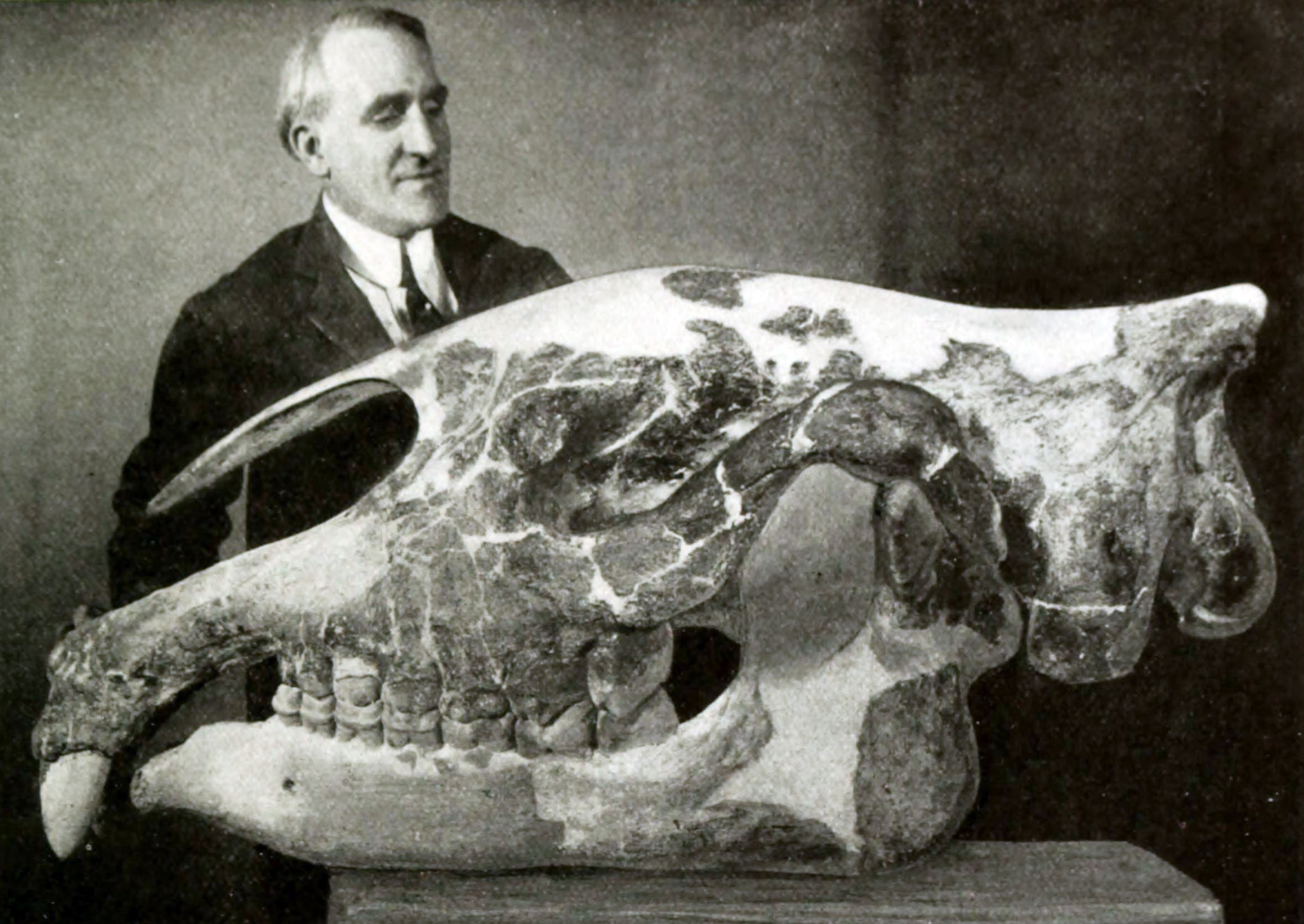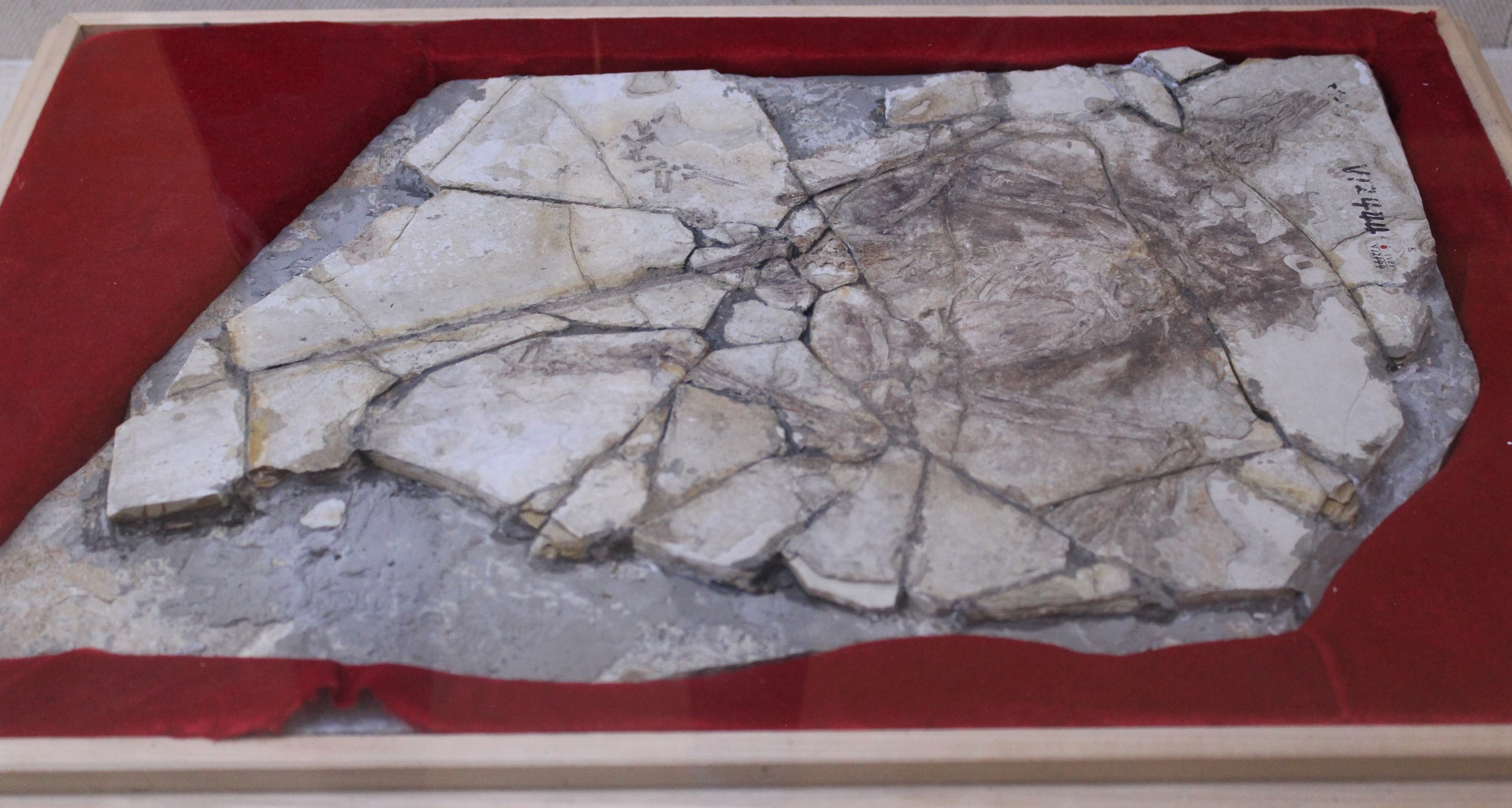|
Beijing Museum Of Natural History
The Beijing Museum of Natural History (BMNH; ) is located at 126 Tian Qiao Nan Street, Dongcheng District, Beijing, 100050, and is the most popular natural history museum in China. It was founded in 1951 as the National Central Museum of Natural History, and its name was changed to the ''Beijing Museum of Natural History'' in 1962. The BMNH is the first large scale natural history museum created in China.BMNH website The BMNH has total floor space of 24,000 square meters, of which 8,000 square meters are available for display and owns more than 200,000 specimens. The major display area is the Tian Jiabing Building. The collections include |
Dongcheng District, Beijing
The Dongcheng District (; literally "east city district") of Beijing covers the eastern half of Beijing's urban core, including all of the eastern half of the Old City inside of the 2nd Ring Road with the northernmost extent crossing into the area within the 3rd Ring Road. Its area is further subdivided into 17 subdistricts. Settlement in the area dates back over a millennium. It did not formally become a district of the city until the establishment of the Republic of China in 1911. The name Dongcheng was first given to it in a 1958 reorganization; it has existed in its current form since a 2010 merger with the former Chongwen District to its south. Dongcheng includes many of Beijing's major cultural attractions, such as the Forbidden City and Temple of Heaven, both UNESCO World Heritage Sites. More than a quarter of the city's Major National Historical and Cultural Sites are inside its boundaries, with a similar percentage of those protected at the municipal level. Tiananme ... [...More Info...] [...Related Items...] OR: [Wikipedia] [Google] [Baidu] |
Lufengosaurus
''Lufengosaurus'' (, meaning "Lufeng lizard") is a genus of massospondylid dinosaur which lived during the Early Jurassic period in what is now southwestern China. Discovery, taxonomy and research During the late 1930s geologist Bien Meinian began to uncover fossils at Shawan near Lufeng in Yunnan province. In 1938 he was joined by paleontologist Yang Zhongjian, at the time better known as "C.C. Young" in the West. In 1940, Yang named remains of a "prosauropod" ''Lufengosaurus huenei''. The generic name refers to Lufeng. The specific name honours Yang's old tutor, the German paleontologist Friedrich von Huene. The holotype, IVPP V15, a partial skeleton, was found in the Lower Lufeng Formation. Originally considered Triassic, this formation is now seen as dating to the Lower Jurassic (Hettangian–Sinemurian). A second species was named by Yang in 1940/1941 and fully described in 1947: ''Lufengosaurus magnus'' was, as its specific name suggests ("the large one" in Lati ... [...More Info...] [...Related Items...] OR: [Wikipedia] [Google] [Baidu] |
Woolly Mammoth
The woolly mammoth (''Mammuthus primigenius'') is an extinct species of mammoth that lived during the Pleistocene until its extinction in the Holocene epoch. It was one of the last in a line of mammoth species, beginning with '' Mammuthus subplanifrons'' in the early Pliocene. The woolly mammoth began to diverge from the steppe mammoth about 800,000 years ago in East Asia. Its closest extant relative is the Asian elephant. DNA studies show that the Columbian mammoth was a hybrid between woolly mammoths and another lineage descended from steppe mammoths. The appearance and behaviour of this species are among the best studied of any prehistoric animal because of the discovery of frozen carcasses in Siberia and North America, as well as skeletons, teeth, stomach contents, dung, and depiction from life in prehistoric cave paintings. Mammoth remains had long been known in Asia before they became known to Europeans in the 17th century. The origin of these remains was long a matt ... [...More Info...] [...Related Items...] OR: [Wikipedia] [Google] [Baidu] |
Megaloceros
''Megaloceros'' (from Greek: + , literally "Great Horn"; see also Lister (1987)) is an extinct genus of deer whose members lived throughout Eurasia from the early Pleistocene to the beginning of the Holocene and were important herbivores during the Ice Ages. The largest species, '' Megaloceros giganteus'', vernacularly known as the "Irish elk" or "giant elk", is also the best known. Fallow deer are thought to be their closest living relatives. ''Megaloceros'' is part of the deer family which includes moose, elk, reindeer, and other cervids. Biology Most members of the genus were extremely large animals that favoured meadows or open woodlands. They are the most cursorial deer known, with most species averaging slightly below at the withers. The various species of the Cretan genus '' Candiacervus'' – the smallest of which, ''C. rhopalophorus'' was just high at the shoulder – are sometimes included in ''Megaloceros'' as a subgenus. Despite its name, the Irish elk was ... [...More Info...] [...Related Items...] OR: [Wikipedia] [Google] [Baidu] |
Stegodon
''Stegodon'' ("roofed tooth" from the Ancient Greek words , , 'to cover', + , , 'tooth' because of the distinctive ridges on the animal's molars) is an extinct genus of proboscidean, related to elephants. It was originally assigned to the family Elephantidae along with modern elephants but is now placed in the extinct family Stegodontidae. Like elephants, ''Stegodon'' had teeth with plate-like lophs that are different from those of more primitive proboscideans like gomphotheres and mastodons. The oldest fossils of the genus are found in Late Miocene strata in Asia, likely originating from the more archaic '' Stegolophodon,'' shortly afterwards migrating into Africa. While the genus became extinct in Africa during the Pliocene, ''Stegodon'' remained widespread in Asia until the end of the Pleistocene. Morphology Size Some species of ''Stegodon'' were amongst the largest proboscideans. ''S. zdanskyi'' is known from an old male (50-plus years old) from the Yellow River that is ... [...More Info...] [...Related Items...] OR: [Wikipedia] [Google] [Baidu] |
Paraceratherium
''Paraceratherium'' is an extinct genus of hornless rhinoceros. It is one of the largest terrestrial mammals that has existed and lived from the early to late Oligocene epoch (34–23 million years ago). The first fossils were discovered in what is now Pakistan, and remains have been found across Eurasia between China and the Balkans. It is classified as a member of the family Paraceratheriidae. ''Paraceratherium'' means "near the hornless beast", in reference to ''Aceratherium'', the genus in which the type species ''P. bugtiense'' was originally placed. The exact size of ''Paraceratherium'' is unknown because of the incompleteness of the fossils. The shoulder height was about , and the length about . Its weight is estimated to have been about . The long neck supported a skull that was about long. It had large, tusk-like incisors and a nasal incision that suggests it had a prehensile upper lip or proboscis (trunk). The legs were long and pillar-like. The lifestyle of ... [...More Info...] [...Related Items...] OR: [Wikipedia] [Google] [Baidu] |
Cenozoic
The Cenozoic ( ; ) is Earth's current geological era, representing the last 66million years of Earth's history. It is characterised by the dominance of mammals, birds and flowering plants, a cooling and drying climate, and the current configuration of continents. It is the latest of three geological eras since complex life evolved, preceded by the Mesozoic and Paleozoic. It started with the Cretaceous–Paleogene extinction event, when many species, including the non-avian dinosaurs, became extinct in an event attributed by most experts to the impact of a large asteroid or other celestial body, the Chicxulub impactor. The Cenozoic is also known as the Age of Mammals because the terrestrial animals that dominated both hemispheres were mammalsthe eutherians (placentals) in the northern hemisphere and the metatherians (marsupials, now mainly restricted to Australia) in the southern hemisphere. The extinction of many groups allowed mammals and birds to greatly diversify so tha ... [...More Info...] [...Related Items...] OR: [Wikipedia] [Google] [Baidu] |
Dinosaur Egg
Dinosaur eggs are the organic vessels in which a dinosaur embryo develops. When the first scientifically documented remains of non-avian dinosaurs were being described in England during the 1820s, it was presumed that dinosaurs had laid eggs because they were reptiles. In 1859, the first scientifically documented dinosaur egg fossils were discovered in France by Jean-Jacques Poech, although they were mistaken for giant bird eggs (birds were not yet recognized as dinosaurs at the time). The first scientifically recognized non-avian dinosaur egg fossils were discovered in 1923 by an American Museum of Natural History crew in Mongolia. Dinosaur eggshell can be studied in thin section and viewed under a microscope. The interior of a dinosaur egg can be studied using CAT scans or by gradually dissolving away the shell with acid. Sometimes the egg preserves the remains of the developing embryo inside. The oldest known dinosaur eggs and embryos are from '' Massospondylus'', which l ... [...More Info...] [...Related Items...] OR: [Wikipedia] [Google] [Baidu] |
Anchiornis
''Anchiornis'' is a genus of small, four-winged paravian dinosaurs, with only one known species, the type species ''Anchiornis huxleyi'', named for its similarity to modern birds. The Latin name ''Anchiornis'' derives from a Greek word meaning "near bird", and ''huxleyi'' refers to Thomas Henry Huxley, a contemporary of Charles Darwin. ''Anchiornis'' fossils have been found only in the Tiaojishan Formation of Liaoning, China, in rocks dated to the Late Jurassic, about 160 million years ago. It is known from hundreds of specimens, and given the exquisite preservation of some of these fossils, it became the first Mesozoic dinosaur species for which almost the entire life appearance could be determined, and an important source of information on the early evolution of birds. Description ''Anchiornis huxleyi'' was a small, bipedal theropod dinosaur with a triangular skull bearing several details in common with dromaeosaurids, troodontids, and primitive avialans. Like other early pa ... [...More Info...] [...Related Items...] OR: [Wikipedia] [Google] [Baidu] |
Microraptor
''Microraptor'' (Greek, μικρός, ''mīkros'': "small"; Latin, ''raptor'': "one who seizes") is a genus of small, four-winged dromaeosaurid dinosaurs. Numerous well-preserved fossil specimens have been recovered from Liaoning, China. They date from the early Cretaceous Jiufotang Formation (Aptian stage), 125 to 120 million years ago. Three species have been named (''M. zhaoianus'', ''M. gui'', and ''M. hanqingi''), though further study has suggested that all of them represent variation in a single species, which is properly called ''M. zhaoianus''. ''Cryptovolans'', initially described as another four-winged dinosaur, is usually considered to be a synonym of ''Microraptor''. Like ''Archaeopteryx'', well-preserved fossils of ''Microraptor'' provide important evidence about the evolutionary relationship between birds and earlier dinosaurs. ''Microraptor'' had long pennaceous feathers that formed aerodynamic surfaces on the arms and tail but also on the legs. This led paleon ... [...More Info...] [...Related Items...] OR: [Wikipedia] [Google] [Baidu] |
Confuciusornis
''Confuciusornis'' is a genus of basal crow-sized avialan from the Early Cretaceous Period of the Yixian and Jiufotang Formations of China, dating from 125 to 120 million years ago. Like modern birds, ''Confuciusornis'' had a toothless beak, but closer and later relatives of modern birds such as '' Hesperornis'' and ''Ichthyornis'' were toothed, indicating that the loss of teeth occurred convergently in ''Confuciusornis'' and living birds. It is the oldest known bird to have a beak. It was named after the Chinese moral philosopher Confucius (551–479 BC). ''Confuciusornis'' is one of the most abundant vertebrates found in the Yixian Formation, and several hundred complete specimens have been found. History of discovery In November 1993, the Chinese paleontologists Hou Lianhai and Hu Yoaming of the Institute of Vertebrate Paleontology and Paleoanthropology (IVPP) at Beijing, visited fossil collector Zhang He at his home in Jinzhou, where he showed them a fossil bird specimen ... [...More Info...] [...Related Items...] OR: [Wikipedia] [Google] [Baidu] |
Liaoning
Liaoning () is a coastal province in Northeast China that is the smallest, southernmost, and most populous province in the region. With its capital at Shenyang, it is located on the northern shore of the Yellow Sea, and is the northernmost coastal province of the People's Republic of China. Historically a gateway between China proper and Manchuria, the modern Liaoning province was established in 1907 as Fengtian or Fengtien province and was renamed Liaoning in 1929. It was also known at that time as Mukden Province for the Manchu name of ''Shengjing'', the former name of Shenyang. Under the Japanese-puppet Manchukuo regime, the province reverted to its 1907 name, but the name Liaoning was restored for a brief time in 1945 and then again in 1954. Liaoning borders the Yellow Sea (Korea Bay) and Bohai Sea in the south, North Korea's North Pyongan and Chagang provinces in the southeast, Jilin to the northeast, Hebei to the southwest, and Inner Mongolia to the northw ... [...More Info...] [...Related Items...] OR: [Wikipedia] [Google] [Baidu] |

.jpg)






